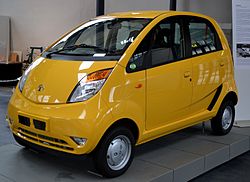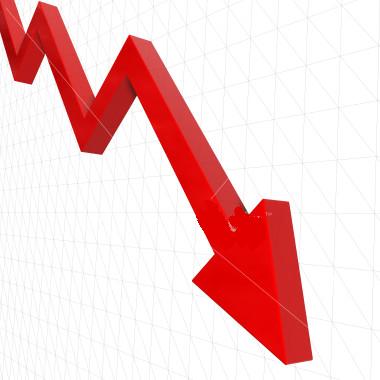In July this year Bill Gates wrote a blog. He titled it The Best Business Book I’ve Ever Read. As he wrote “Not long after I first met Warren Buffett back in 1991, I asked him to recommend his favorite book about business. He didn’t miss a beat: “It’s Business Adventures, by John Brooks,” he said. “I’ll send you my copy.” I was intrigued: I had never heard of Business Adventures or John Brooks.” Gates got a copy of the book from Buffett. “Today, more than two decades after Warren lent it to me—and more than four decades after it was first published—Business Adventures remains the best business book I’ve ever read. John Brooks is still my favorite business writer. (And Warren, if you’re reading this, I still have your copy),” Gates added. The book is essentially a collection of 12 long articles (I don’t know what else to call them) that Brooks wrote for the New Yorker magazine, where he used to work. A chapter that should be of interest to Indian readers is The Fate of Edsel. A reading of this chapter clearly tells us why Tata Nano, the most hyped Indian car ever, has failed to live up to its hype. But before we get to that, here is a brief summary of the chapter. In 1955, the Ford Motor Company decided to produce a new car, which would be priced in the medium range of $2,400 to $4,000. The car was designed more or less as was the fashion of the day. It was long, wide, lavishly decorated with chrome, had a lot of gadgets and was equipped with engines which could really rustle up some serious power. The car was called the Edsel. It was named after Edsel Ford, the only son of Henry Ford who started the Ford Motor Company. In 1943, Edsel Ford had died at a young age of 49, of stomach cancer. In fact, even before the Edsel car was launched there was a lot of hype around it. As Brooks writes “In September 1957, the Ford Company put its new car, the Edsel, on the market, to the accompaniment of more fanfare than had attended the arrival of any other new car since the same company’s Model A. A model brought out thirty years earlier.” The company had already spent $250 million on the car, before it was launched. The Business Week called it more costly than any other consumer product in history. Given this huge cost, Ford had to sell around 200,000 Edsels in the first year, if it had to get its investment back. Nevertheless, two years, two months and fifteen days later, it had only sold 109,446 Edsels. This included cars bought by Ford executives, dealers, salesman, workers etc. The number amounted to less than 1% of the cars sold in America during that period. On November 19, 1959, it pulled the plug on the car. Estimates suggested that Ford lost around $350 million on the car. So what went wrong? Some of the feedback from trade publications was negative. Over and above that, some of the cars that were sent out initially were badly made. As Brooks writes “Automotive News reported that in general the earliest Edsels suffered from poor paint, inferior sheet metal, and faulty accessories, and quoted the lament of a dealer about one of the first Edsel convertibles he received: “The top was badly set, doors cockeyed, springs sagged.”” Some individuals who worked on making and launching the car liked to believe in later that it was the because of the Sputnik, the first artificial space satellite launched by the Soviets that led to the car not selling. As Brooks puts it “October 4th[1957], the day the first Soviet Sputnik went into orbit, shattering the myth of American technical pre-eminence and precipitating a public revulsion against Detroit’s fancier baubles.” Detroit was the city were the biggest motor companies in the United States were head-quartered back then. While these could have been reasons for the car not selling, the real reason for the car not selling was the hype that accompanied it. As Brooks writes “It was agreed that the safest way to tread the tightrope between overplaying and underplaying the Edsel would be to say nothing about the car as a whole but to reveal its individual charms a little at a time—a sort of automotive strip tease…The Ford Company had built up an overwhelming head of public interest in the Edsel, causing its arrival to be anticipated and the car itself to be gawked at with more eagerness than had ever greeted any automobile before it.” C Gayle Warnock, director of public relations of the Edsel division of Ford, shares an interesting example, which provides the real reason behind the failure of the Edsel car. In 1956, a senior official working on the Edsel launch (in fact it wasn’t called the Edsel then, it was just the E-Car) gave a talk about it in Portland, Oregon. Warnock was aiming for some coverage regarding the event in the local press. But what he got was something he had not expected. The story got picked up by wire services and was splashed all across the country. As Warnock recounts in the chapter “Clippings [of the media coverage] came in by the bushel. Right then I realized the trouble we might be headed for. The public was getting to be hysterical to see our car, figuring it was going to be some kind of dream car—like nothing they’d ever seen. I said… “When they find out it’s got four wheels and one engine, just like the next car, they’re liable to be disappointed.”” And this is precisely the reason why the Edsel flopped. The hype was so much that the public expected something that was totally out of the world. But what Ford was basically giving them in the rephrased words of Larry Doyle, the head of sales at the Edsel division, “exactly the car that they had been buying for several years.” As Doyle put it “We gave it to them and they couldn’t take it.” Further, it did not help that the first lot of cars was not properly manufactured. “Within a few weeks after the Edsel was introduced, its pitfalls were the talk of the land,” writes Brooks. Now replace the word Edsel with Nano and the situation stays more or less the same. The hype around the car was huge. When the car was launched in 2009, the entire world media was in Delhi for the launch. In fact, before the car was launched the rating agency Crisil said that the car could expand the Indian car market by 65%. People who had cars were already worried about the traffic on the roads getting worse than it already was, because of the Nano. Before the car was launched in 2009, prices in the used car market fell by 25-30%, given Nano’s expected price point of Rs 1 lakh. Nonetheless, Nano could not live up to the hype. In a May 2014 newsreport, the Business Standard pointed out that “Launched in 2009,Nano sales between 2010-11 and 2012-13 constituted 23-24 per cent of Tata Motors’ total sales. But Nano sales declined dramatically after peaking to 74,527 in 2011-12. The numbers came down by more than 70 per cent in two years to 21,129 in 2013-14. Tata Motors has set up a facility at Sanand in Gujarat to make 250,000 Nanos a year.” So, the car sold nowhere near the numbers it was expected to. What did not help was that when the car actually started hitting the market in 2010, some units caught fire. After all the hoopla around the Nano, this wasn’t what the public was ready to accept. Brooks’ sentence written for Edsel can be re-written for Nano as well: “After the Nano was introduced, its pitfalls were the talk of the land.” Further, the hype around the car was so huge that the people were expecting something totally out of this world. They did not know what they wanted, but they did not want, what they got. The question that remains is how much could you expect out of a car which was supposed to be sold at Rs 1 lakh? The article originally appeared on www.FirstBiz.com on Nov 18, 2014
(Vivek Kaul is the author of the Easy Money trilogy. He tweets @kaul_vivek)




